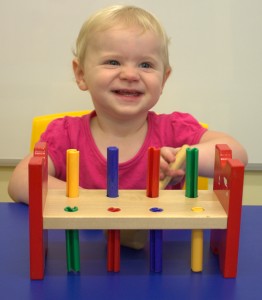 Communication is not just about having the right words or being able to construct a well formed sentence. It is also about how children use their communication skills. Sometimes children with speech and language difficulties and other disabilities are passive communicators. They respond when they are spoken to and say things when they are prompted. To be an effective communicator however children need to know how to initiate communication themselves. They also need to know how to keep an interaction going by taking a number of turns, not just making a single response. Here are some ways you can help your child be an active and effective communicator.
Communication is not just about having the right words or being able to construct a well formed sentence. It is also about how children use their communication skills. Sometimes children with speech and language difficulties and other disabilities are passive communicators. They respond when they are spoken to and say things when they are prompted. To be an effective communicator however children need to know how to initiate communication themselves. They also need to know how to keep an interaction going by taking a number of turns, not just making a single response. Here are some ways you can help your child be an active and effective communicator.
Using language to make choices helps children understand that they can use language to have an effect on the world around them. It is a good place to start with children who do not use much communication to express their needs. Children want to communicate more as they learn that language can help them to get what they want. This is powerful motivation, especially for toddlers who are developing the need to be more independent. A motivated child will communicate more and in turn learn more skills. Even children with very limited communication skills can be helped to make choices.
To help your child make more choices try the following ideas:
Develop the habit of offering choices as often as you can. As adults we often make small decisions for children that they could make themselves which would allow them to learn and develop communication skills. Often these small things don’t really matter, it just takes a little more time for your child to decide, but this is worth it to develop their skills.
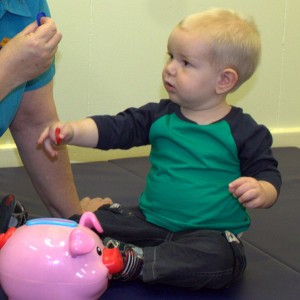 Choices can include:
Choices can include:
- Which t-shirt to wear
- Which snack to eat
- which cup to use
- Which book to read
- Which movie to watch
- Which toy to play with
Only offer choices you are happy for your child to have. For example if you think you child has had enough biscuits offer a choice of apple or banana. For toddlers being able to choose for themselves sometimes makes things more appealing. They may be more likely to eat the apple if they choose it than if you say “no more biscuits, have an apple now”. Make the choices clear and specific. “Chocolate or strawberry?” will get a clearer response from a young child than “What flavour?” You can gradually broaden the options as your child’s skills develop.
Only offer appropriate choices. There will be times when you are busy and need to choose yourself, such as if you are in a hurry to get to an appointment. There are also things that children are not able to make decisions about such as whether to get in their car seat or whether to hold your hand in a busy place. Be clear about these things. Say “get in your seat now” rather than “do you want to get in your seat” as this is not a real choice. Think of situations when you have the time and your child can make appropriate choices. Make the most of these times by offering as many choices as possible.
Helping your child to choose:
Children can make choices in a variety of ways. Think about the communication skills your child has and offer choices in a way that they can be successful.
This can include:
- Looking at the one they want
- Reaching for the one they want
- Pointing to the one they want
- Using a communication aide such as a picture card or signing
- Using a word or phrase
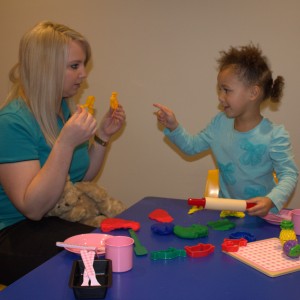 Start by offering a choice of objects. Get face to face with your child and hold up two objects, one each side of your face. “Do you want the apple? Show the apple to the child and say “apple”. “Do you want banana?” Show the banana and say “banana”. Then hold them each side of your face and watch your child’s response. If they look, point or reach for one item, say the name of it again and give it to them.
Start by offering a choice of objects. Get face to face with your child and hold up two objects, one each side of your face. “Do you want the apple? Show the apple to the child and say “apple”. “Do you want banana?” Show the banana and say “banana”. Then hold them each side of your face and watch your child’s response. If they look, point or reach for one item, say the name of it again and give it to them.
When you child can consistently point to objects offer choices with pictures. Use PECS cards if your child has them or make your own pictures of things your child likes using pictures from magazines, catalogues or the internet. Laminate them to make them last longer. Present two pictures, say the names of the items and watch your child to see what they prefer. If needed help them point to the one they are looking at, say its name for them then give your child the object straight away.
When your child can use words to choose you can offer a choice using words. Still keep the choices to only two items to start with. As your child’s skills develop you can introduce describing words “red cup or blue cup” “Bob shirt or Batman shirt”.
Whenever your child makes a choice take this as a chance to expand their communication skills by:
- modelling the name of the object if your child cannot say it
- adding an extra word if your child does say the word
- talking about the item your child chooses
Once your child can make choices you can encourage them to initiate requests without being offered a choice.
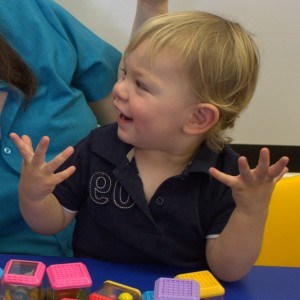 Provide opportunities when your child will need to communicate. As parents we get good at understanding our children, predicting and interpreting what they want and need. If we do this often our children do not need to initiate communication themselves, and this effects the development of communication skills as well as other important things such as independence, persistence, resilience and self help skills.Make sure that your child has plenty of opportunities to need to communicate every day.
Provide opportunities when your child will need to communicate. As parents we get good at understanding our children, predicting and interpreting what they want and need. If we do this often our children do not need to initiate communication themselves, and this effects the development of communication skills as well as other important things such as independence, persistence, resilience and self help skills.Make sure that your child has plenty of opportunities to need to communicate every day.
In everyday activities such as dressing, bathing and mealtimes, don't provide everything your child needs, rather "forget" some things so that your child needs to communicate this to you. For example you might give your child an empty cup at lunchtime and wait for them to show you they want juice in it. Better still put the milk and juice bottles on the table and see if your child shows you in some way which one they want. They might say the word or they might reach, point or look at the one they want and you can then model the word for them.
Put favourite toys out of reach such as on a shelf or in a clear box where your child can see them but not get them for themselves and if your child wants the item, encourage asking or pointing before giving it to them.
Change routines your child is familiar with and wait to see if they try to correct you. Pretend you made a ‘silly’ mistake.
In favourite games or activities encourage your child to ask for the necessary items needed and to tell you what should happen next:
- When drawing put out the paper and wait for your child to ask for pencils.
- When playing with lego or any other toy, pretend that you do not know what to do and wait for your child to show or tell you.
- When making something familiar in the kitchen together such as toast or a sandwich pretend you do not know what to do, wait and encourage your child to show or tell you what to do
- When playing familiar games stop and wait to see if your child communicates to you that you need to ‘go’ or they want ‘more’.
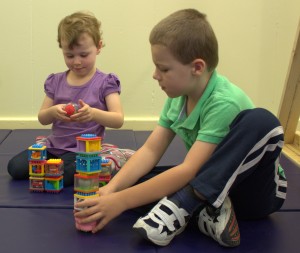 When your child is making a single communication attempt you can expand this by developing turn-taking.
When your child is making a single communication attempt you can expand this by developing turn-taking.
Conversations are made up of a series of turns. I take a turn, then you take a turn, and then I take another turn. Some children need support to keep their interactions going for more than a single turn. Teaching children how to take turns in games will help them to learn about taking turns when they are talking. A turn can be a gesture, sound, word, sign or pointing to an object, or any combination of these.
Try to structure your play activities so you and your child take turns and are equally active. Once you have taken your turn, pause and wait with anticipation for your child to take another turn. Show them using body language, that you expect a response. Silently count to five before saying or doing anything. Waiting for the child is difficult to do. It is much easier to fill the gap, but if we don't wait, we may miss the child's attempt to take another turn. If we don't expect a response we probably won't get one. Use the turn-taking technique in different situations.
Here are some ways to help your child learn to take turns.
- Peek-a boo
- Rolling the ball back and forth to your child. As you roll the ball model the word “go” at the same time.
- Play skittles and take turns rolling the ball
- Take turns blowing bubbles
- Take turns stacking blocks or when playing with stacking cups or stacking ring toys
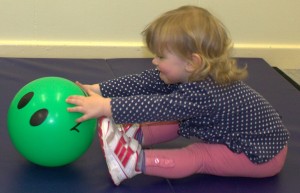 Push a toy car back and forth
Push a toy car back and forth- Take turns with another child, parent or a teddy going down a slide
- Take turns with simple drawing, stamping and sticking activities
- Take turns to turn over cards in a simple matching game
- Take turns to open flaps in a simple book
- Take turns to press pop up toys
Watch to see if your child lets you know they have had enough. Being able to assert yourself when you don't want something is an important communication skill too. Watch for signs then help your child use a simple word or gesture such as "no" or "finished".
Allowing your child to be an active communicator helps them prepare to be effective communicators and to develop independence, assertiveness and self esteem.
 If you have concerns about your child's speech or language skills the Talking Matters website has information about these skills and checklists to see how your child is developing for their age. We provide individualised assessments and therapy for children with speech, language and learning difficulties and other disabilities. Our aim is to help parents help their child reach their potential. This information is not designed to replace professional support where this is needed rather it can be used in conjunction with professional therapy to support children's skill development.
If you have concerns about your child's speech or language skills the Talking Matters website has information about these skills and checklists to see how your child is developing for their age. We provide individualised assessments and therapy for children with speech, language and learning difficulties and other disabilities. Our aim is to help parents help their child reach their potential. This information is not designed to replace professional support where this is needed rather it can be used in conjunction with professional therapy to support children's skill development.
To find out more about how the Talking Matters team can help your child click here. We provide speech pathology, occupational therapy and psychology services to children with a range of needs including autism spectrum disorders.
To find out more about Talking Matters visit us on our website, Facebook page, Twitter, or Pinterest. If you live in Adelaide and would like to discuss how Talking Matters can help your child call our friendly office staff on 08 (08) 8255 7137.
Jo Brenecki
Speech pathologist
Related Blog Posts
If you liked this post you may also like:
Language Games
Learning to Move
Importance of routine
Ready for Books!



